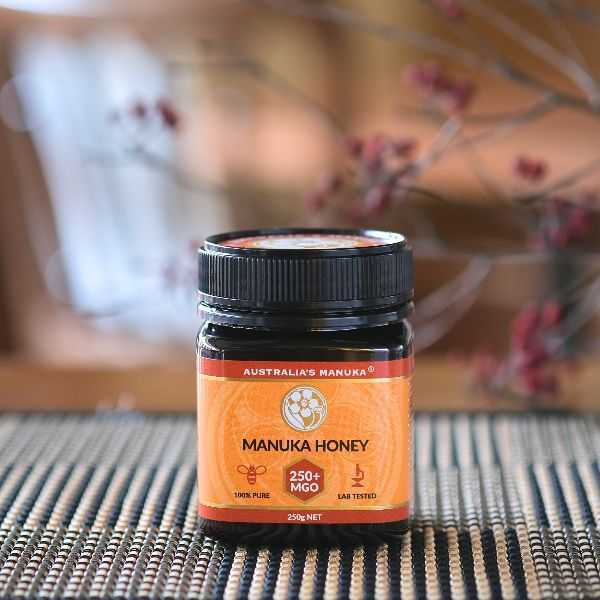






What is Manuka Honey?

Honey produced from the flowers of Leptospermum, which is cultivated in both Australia and New Zealand.
It has unique healing properties not found in other honeys, and cold extraction and organic production methods are used to ensure that these properties are preserved and maintained.
What is MGO?
One of the reasons why Manuka honey has a high antibacterial effect is the presence of a component called methylglyoxal (MGO) contained in Manuka honey.
The MGO value indicates the methylglyoxal content (mg) per kg of the product.

Main effect
-
Promotes wound healing
-
Effective against multidrug-resistant bacteria
-
Keep the wound moist
-
Has proven antibacterial properties
-
Remove dust and dirt from scratches
-
Suppresses the formation of scabs and makes scars less likely to remain
-
Prevents bandages from sticking to the skin
-
Suppresses inflammation of wounds
Australian Manuka Honey

Only one species of Manuka was found in New Zealand (Manuka), while there are more than 80 species of Manuka recognized as native to Australia.
Twenty-eight of the 80 Australian Manuka species are scientifically recognized for their antibacterial activity. This means that these species are rich in methylglyoxal (MGO), the source of the antibacterial properties unique to Manuka honey.
Following numerous studies in New Zealand, studies in Australia have demonstrated that Australian's Manuka ® honey has the most important MGO property and can suppress the growth of numerous bacteria and fungi.
The study also shows that some of Australia's Manuka ® products are more effective than Manuka in New Zealand because they contain higher levels of MGO, DHA, and leptosperin.
Manufacturing process

Describe your image

Describe your image

Describe your image

Describe your image







